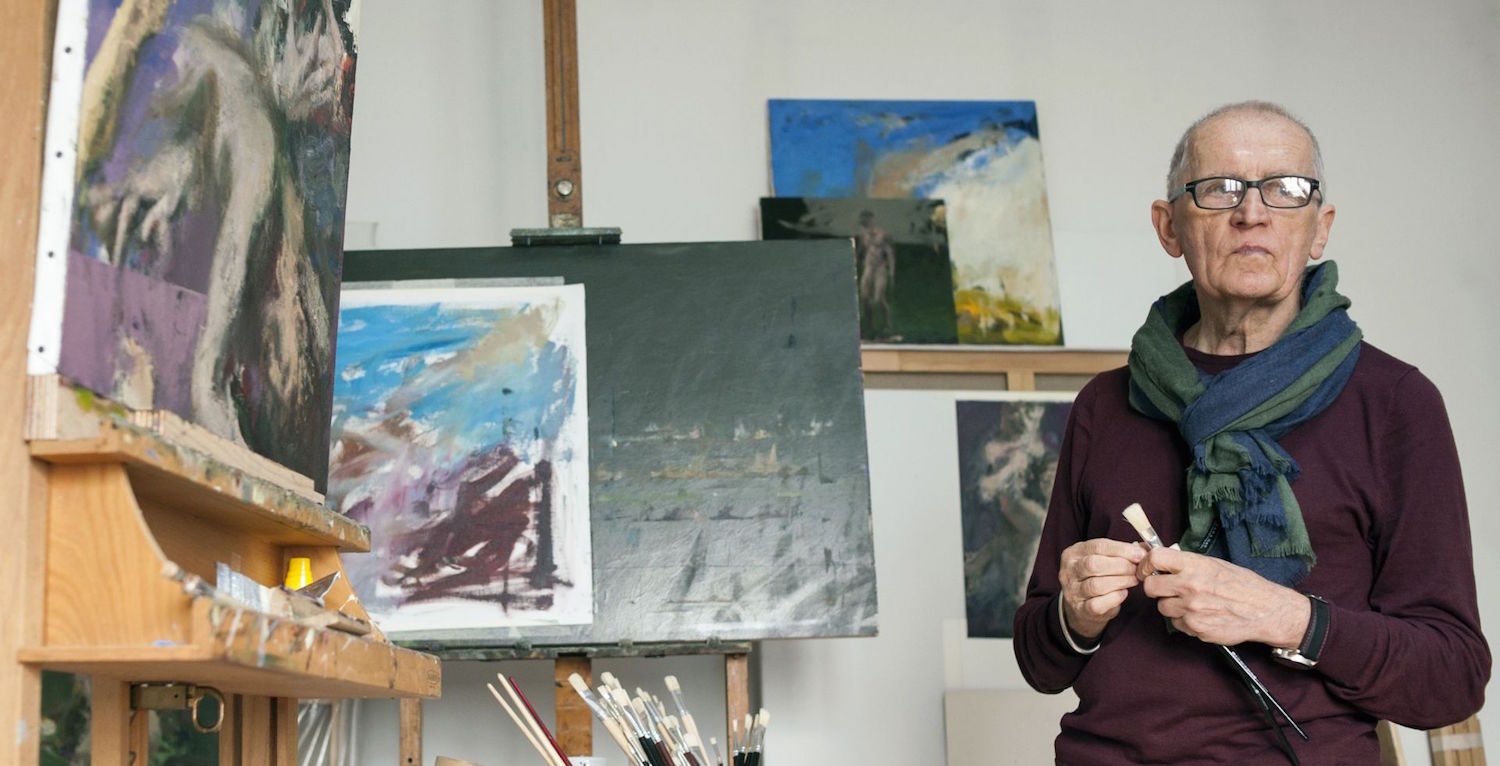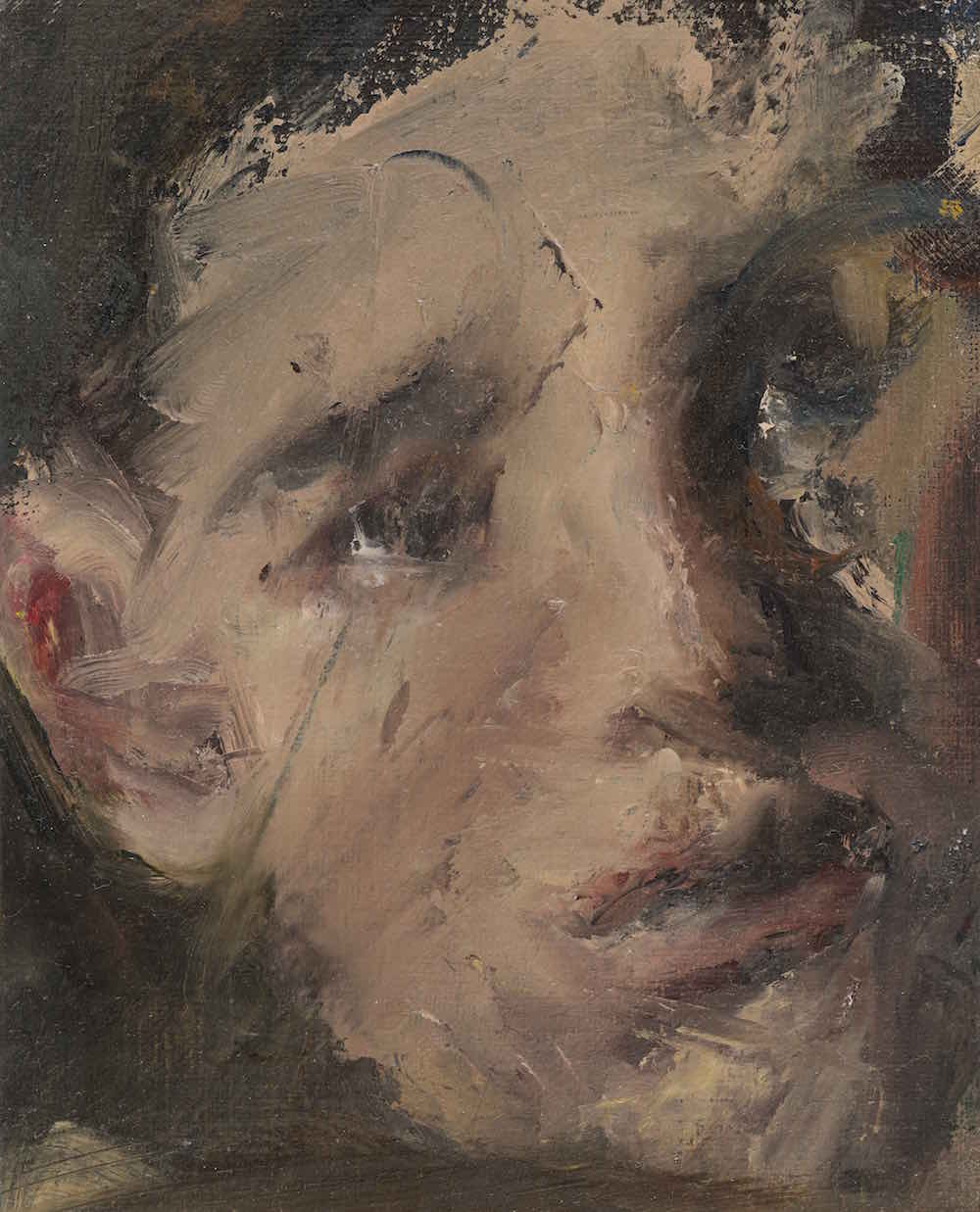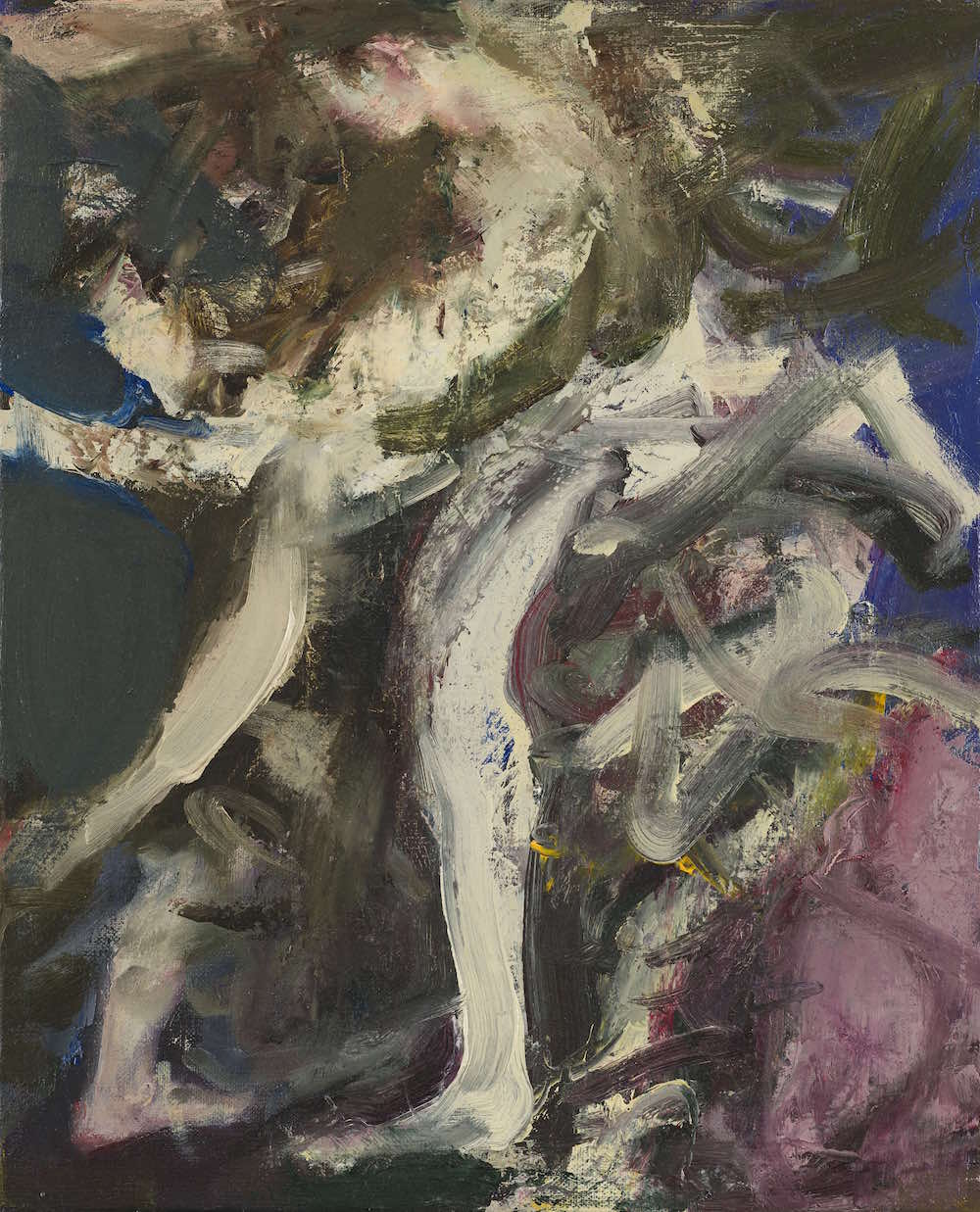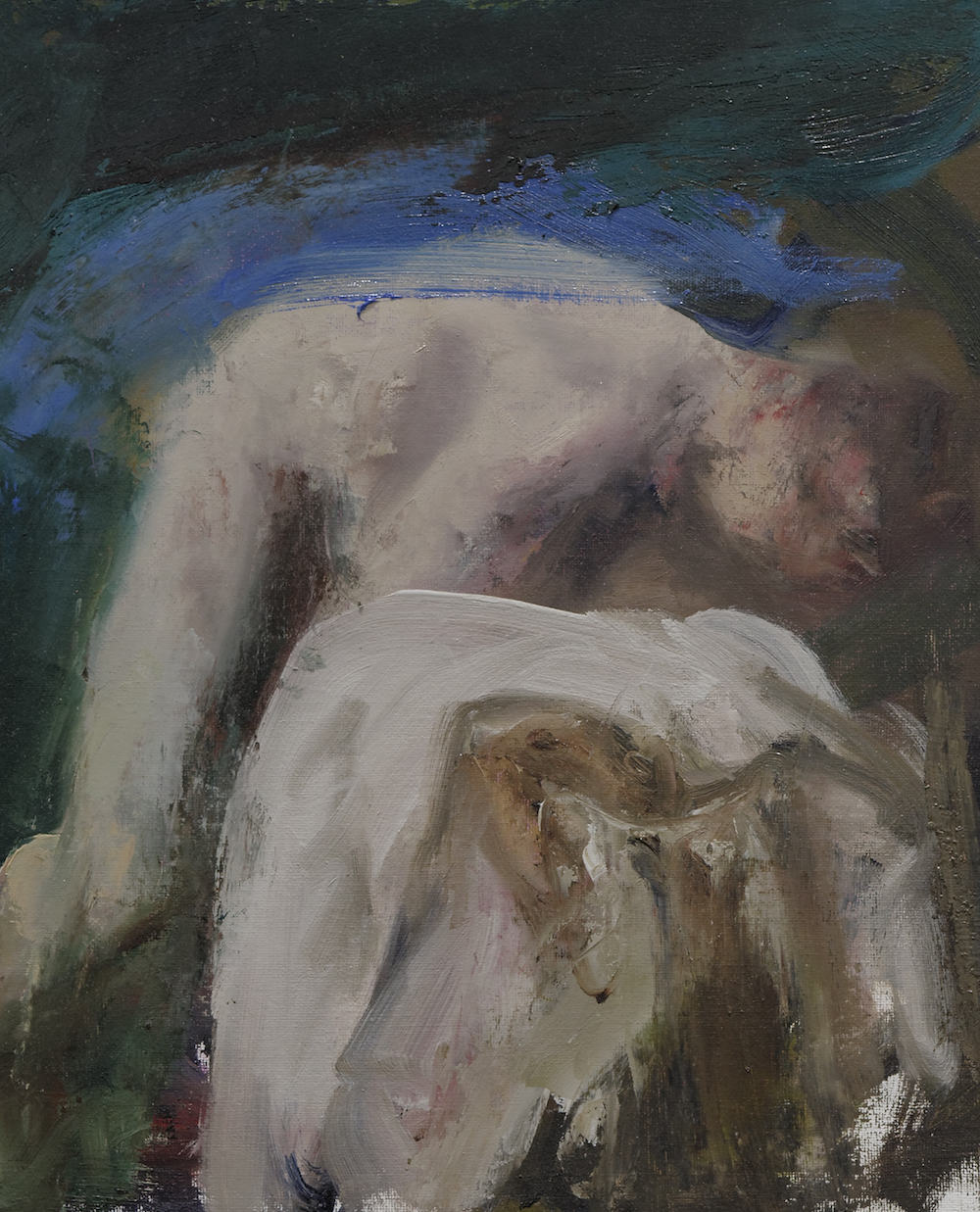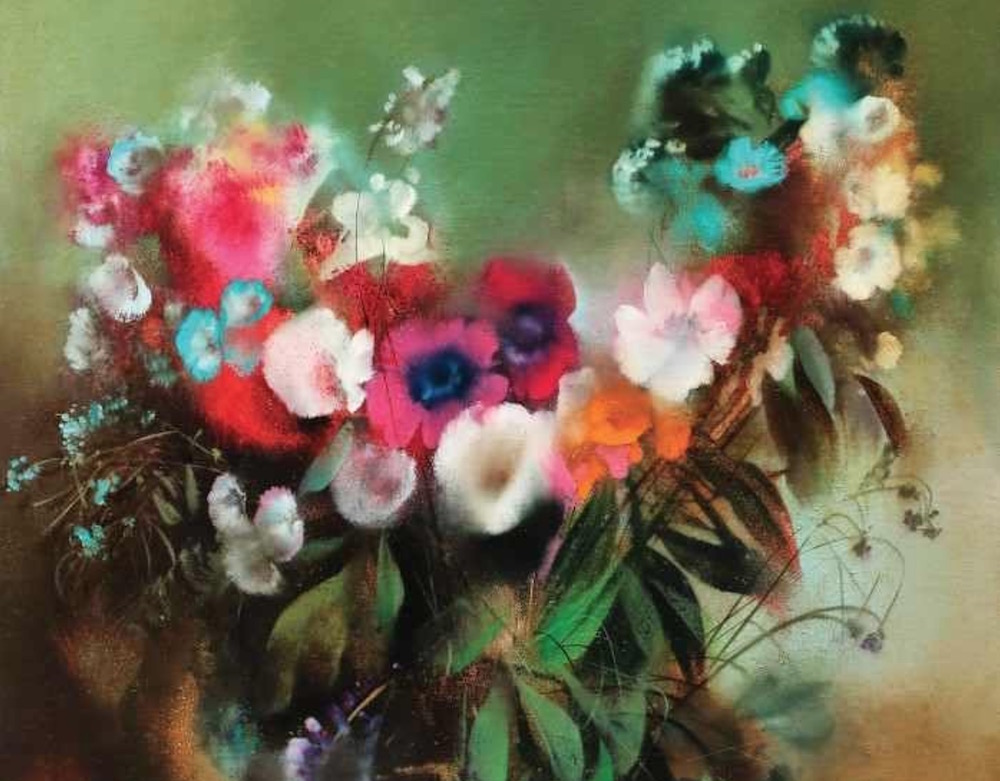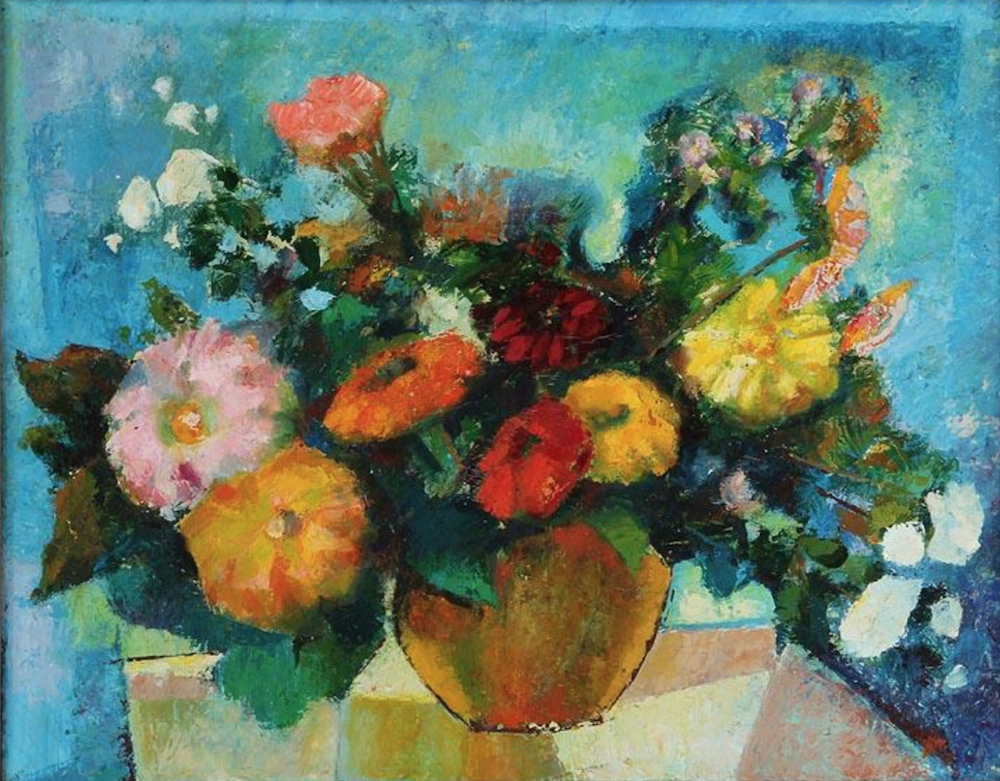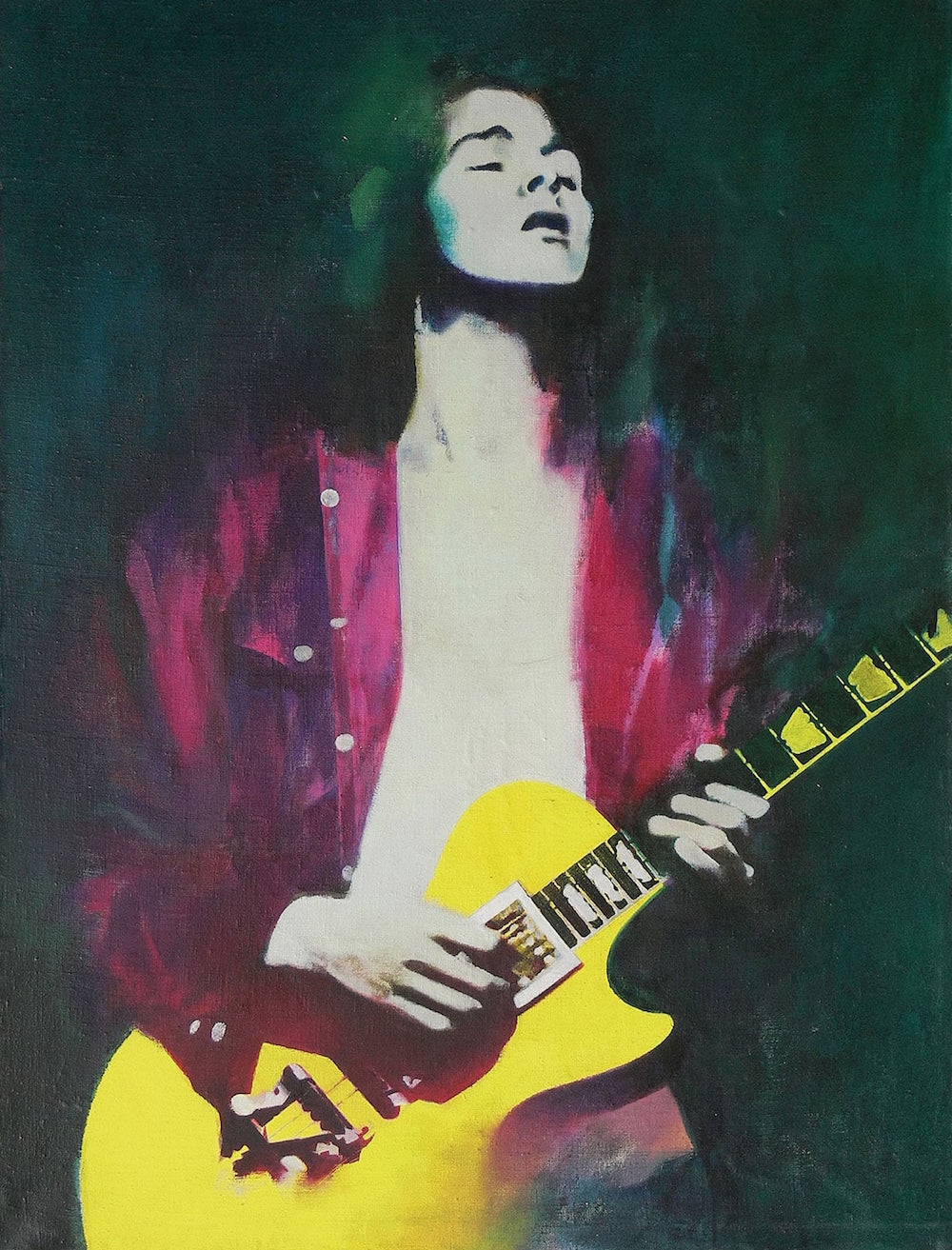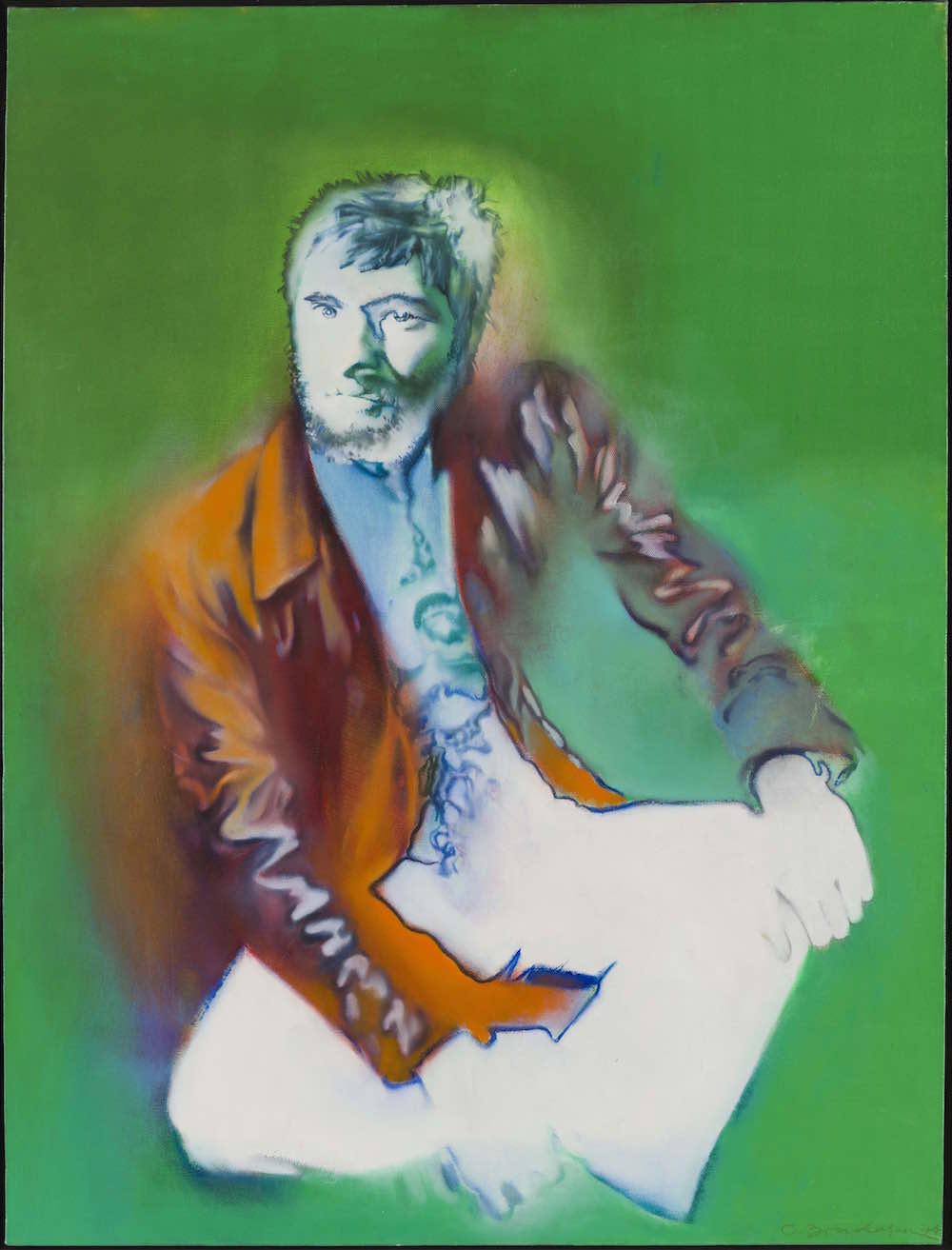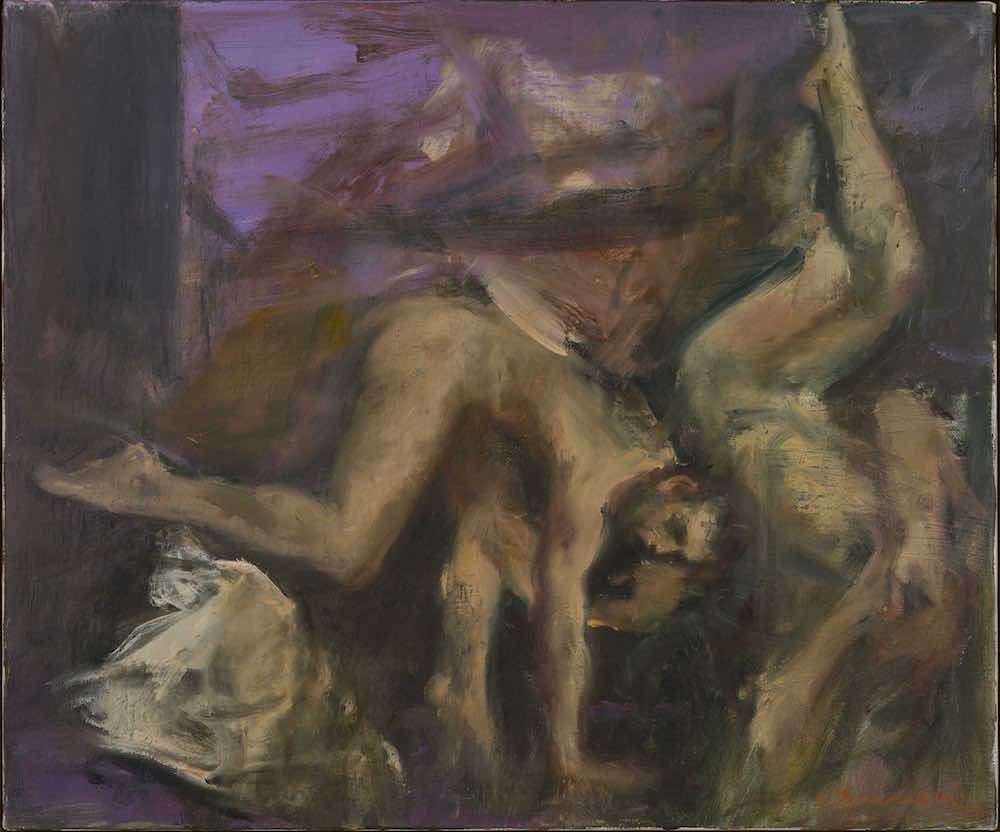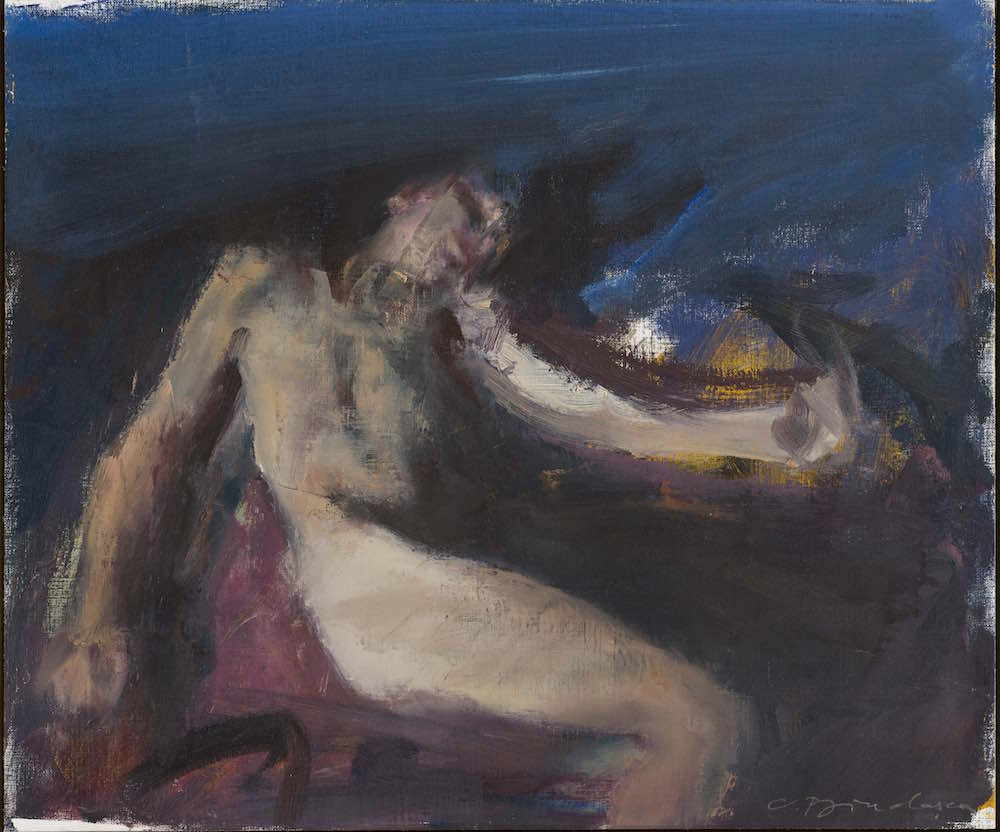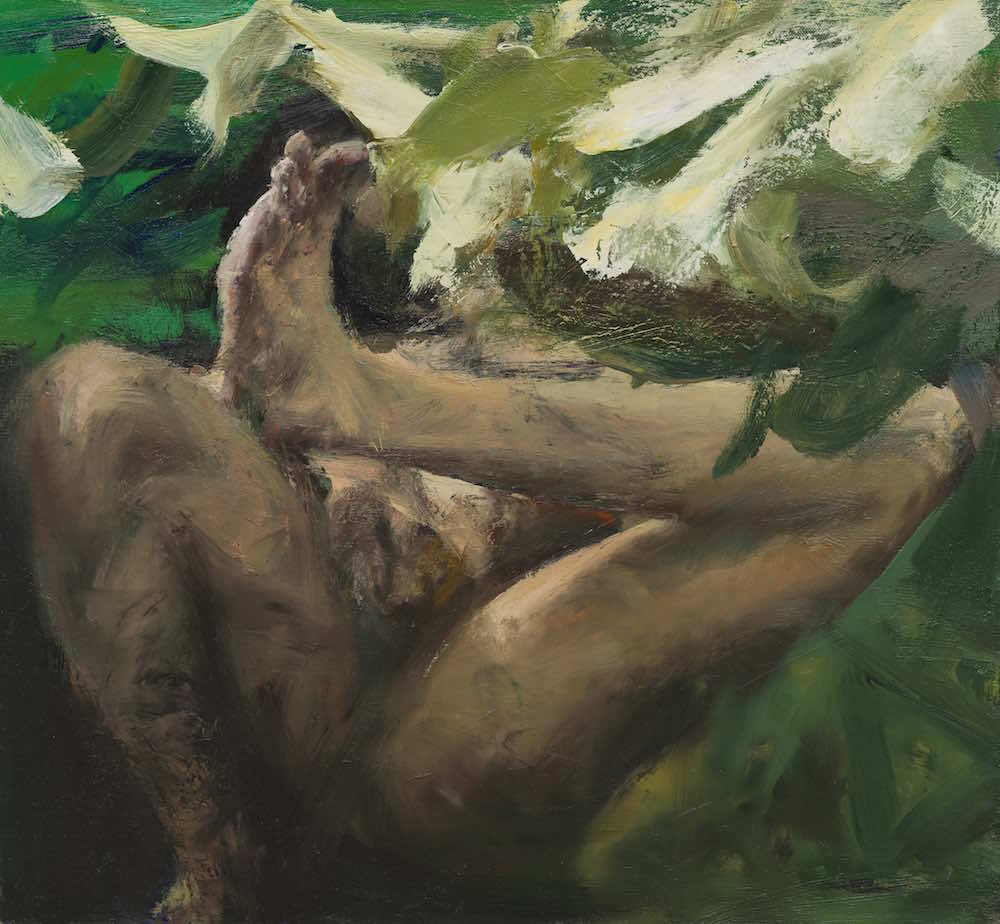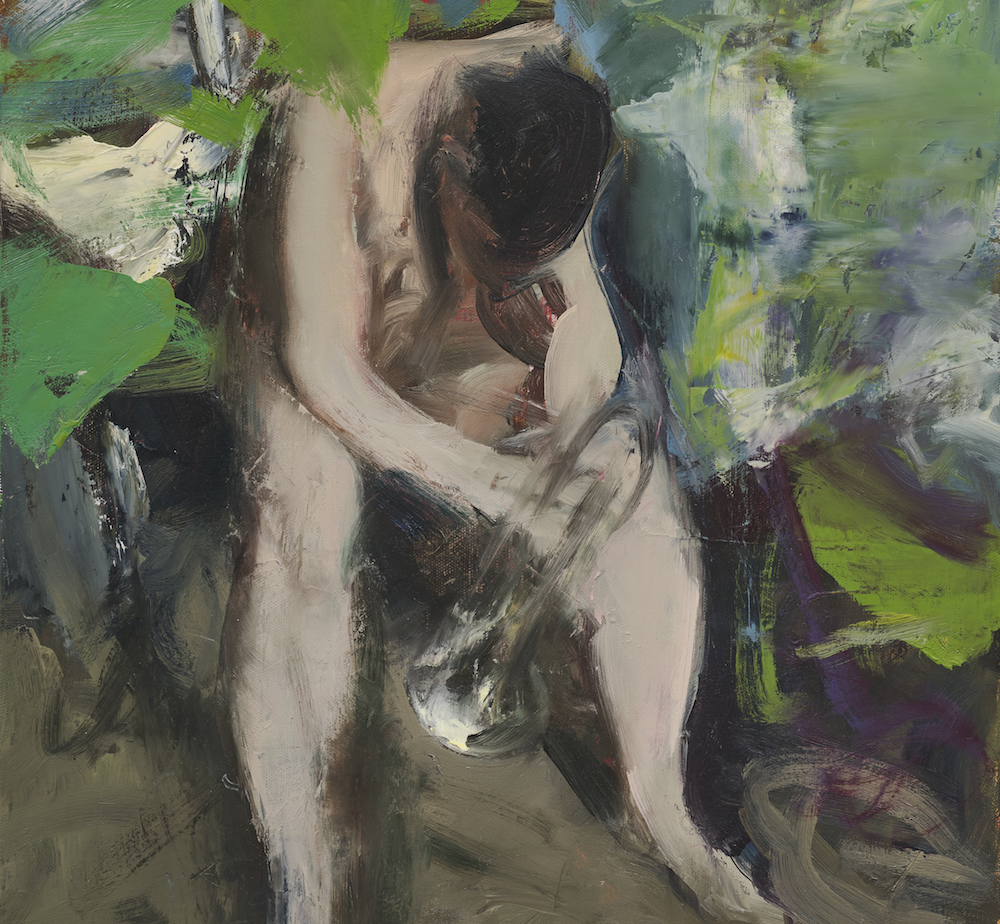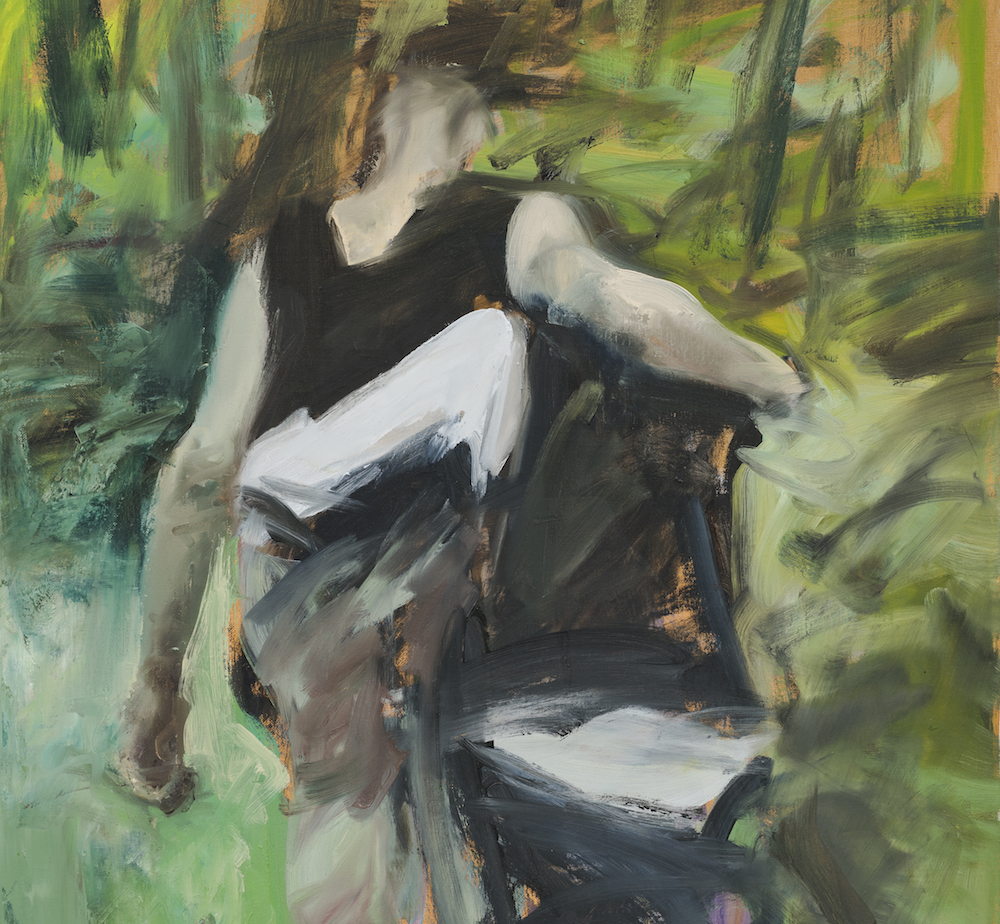Cornel Brudaşcu: how Romania’s foremost painter forged a queer identity against the odds
Cornel Brudaşcu has been a leading figure in Romanian art since the 1960s. Only able to come out following the collapse of communism, he now explores the male body in his work. Looking back over his career, can we see traces of a queer identity?
How to describe the work of Romanian artist Cornel Brudaşcu (b. 1937)? Having studied at the Ion Andreescu Institute of Arts in Cluj-Napoca, where he still lives today, Brudaşcu could be considered a forerunner of what, since the fall of communism, has become known as the Cluj School of Painting. Since the inclusion of his now-signature brightly coloured portraits in Tate Modern’s exhibition The World Goes Pop in 2015, he has also been associated with Pop Art. Neither the Cluj scene nor Pop, however, fully capture Brudaşcu’s achivements. It would be too easy to describe Brudaşcu’s paintings as “sad”, even if that seems a fair description — from the hazy shrill of the 1970s canvasses to the dramatic solemnity of more recent works. But there is something else as well: longing, melancholia, escapism. Where does this come from?
The key intrepretive trap when attempting to interpret the not-quite-sadness of Brudascu’s work is that of sexuality. He did not publicly disclose his homosexuality until late in his life, and nor was the eroticised male body thematised in his art until then. So, when painter-colleagues in the West such as David Hockney were portraying their boyfriends diving into swimming pools, Brudaşcu, like so many Romanian artists at the time, felt obliged to render the reigning dictator. How could this oppression of part of his identity not manifest itself in the foggy faces of his subjects, or in the dreamlike luminescence of his many flower arrangements? But this seems a reductive and somewhat condescending reading: who’s to say how much agency Brudaşcu felt he had over his practice, or whether it was even desirable to air one’s gay laundry in galleries?
The question of a closeted sexuality is tied up with other familiar intrepretive tropes about Romanian artists: the Iron Curtain, communism, Ceauşescu. To an extent this is a convenient western European fantasy of the oppression that took place in the Eastern Bloc; Brudaşcu himself does not unambiguously condemn that era. “I’m sorry to say it,” he responded when asked by Romanian media to describe the conditions for art under the former regime, “but unlike today, there was an emphasis on art. Of course it served the interests of the system, but an artist was well regarded. In fact, people like [actor Radu] Beligan or [singer Nicolae] Herlea were venerated — they were considered to be the artists of the people.”
What we see in his paintings is not repression, but translation — what he calls adaptation to a style
“Sure,” Brudaşcu has said, “they came to check the workshop, and when you had a commission, there were certain themes you had to include. There was nothing you could do about that. But the theme could also be adapted to a style, or some more modern formula. If you have the talent and the ability to see, you can turn any banal thing into something cool, even a portrait of Ceauşescu.” And that’s what Brudaşcu did. What we see in his paintings is not repression, but translation — what he calls adaptation to a style. With every translation there is a certain slippage of connotation; some look in the eye, some leftover attachment to genre. This is where he plays with sexuality.
When Brudaşcu’s style is viewed as a form of translation, then comparison between his work and David Hockney’s is not so far-fetched after all. Britain’s foremost Pop-painter was also big on still lifes and interiors in an era when such classical motifs seemed dated. While still lifes have always ranked lowest in the hierarchy of genres, paintings of objects and flowers testify to people’s everyday lives. As such, they are the perfect subjects of postmodern art, preoccupied as it is with everything pedestrian. In Hockney’s still lifes, would-be bourgeois assemblages achieve a queer lilac glow. They definitely belong to this world, but more than that they belong to his world; they are a fragment of his world.
Contemporary thought on queer experience places loss at its centre; loss that leaves room to experiment with new figurations and alternate narratives
Conversely, Brudaşcu’s flower arrangements of the 1970s have very little to do with reality. Their mode of representation is rather like that of theatre, of verisimilitude; a realism should always be understood as staged. The tradition on which Brudaşcu builds is that of the old masters — his is a universe of stories. While his choice of such popular subject matter makes him, in accordance with the communist ideal, an “artist of the people”, his still lifes are not so much about the everyday as the possibility of transcending it. Among the Dutch Renaissance painters who championed still life, Jan van Huysum became famous for his “impossible bouquets”: flowers which, due to geography or season, it would have been impossible to combine. This is how I see Brudaşcu’s paintings: as impossible glimpses of a different existence few would have the audacity to imagine. A wreath for the funeral of one who was never born, and who for that reason we cannot exactly mourn. This is why “sad” doesn’t capture his style: Brudaşcu’s canvases are extremely earnest, no doubt about it, but they are devoted to fiction rather than reality.
This proscenium offers a new clarity to his famous portraits from the same period. Guitarist and Portrait (Ion Munteanu) (both 1970), for instance, are representations of absence. Brudaşcu picked up the angelic rockstar of the former, strangely akin to Edvard Munch’s Madonna, from some imported magazine. Like a character in a novel, he is not native to the life that Brudascu knows. Ion Munteanu is also defined by absence: he took his own life at a young age. His is a loss of potential, of a life not lived. Here we see how Brudaşcu’s translations, slippages and fictions relate to the question of his sexuality. Rather than focus on sexual practices themselves, much contemporary thought on queer experience places loss at its centre; loss that leaves room to experiment with new figurations and alternate narratives. In other words, absence that draws the outline for desire, and makes the queer drive a creative one. Perhaps Brudascu’s awareness of sexuality’s divergences from hegemonic prescriptions allowed him to imagine how anything and everything might be different, too.
In that sense, his paintings were “queer” long before they outwardly depicted love between men. But where in the early works sexual deviance was a faint trace — the world as we know it wrapped in a gay haze — from around 1990, Brudaşcu abandoned his trippy photo-realism for a more gestural style, and more libidinous content. Broad expressionist brushstrokes render limbs engaged in sex, dancing or the occasional somersault amidst a dramatic colour palette of burgundy and royal blues. One recurring motif is a backwards tumble that reveals the anus: life seen from its gayest angle. But still, each scene is as flippant as it is intense, like a 19th-century ballet, or a Russian novel; at any moment, tragedy might turn into comedy, or pain into pleasure. Sure, the themes are much more explicitly homoerotic, but what drives the scene is the same as ever: the thrill of worlds conjured out of nothing.
Text: Kristian Vistrup Madsen
Top image: Untitled (2015). Image: Trevor Good. Courtesy the artist and Plan B Cluj, Berlin
